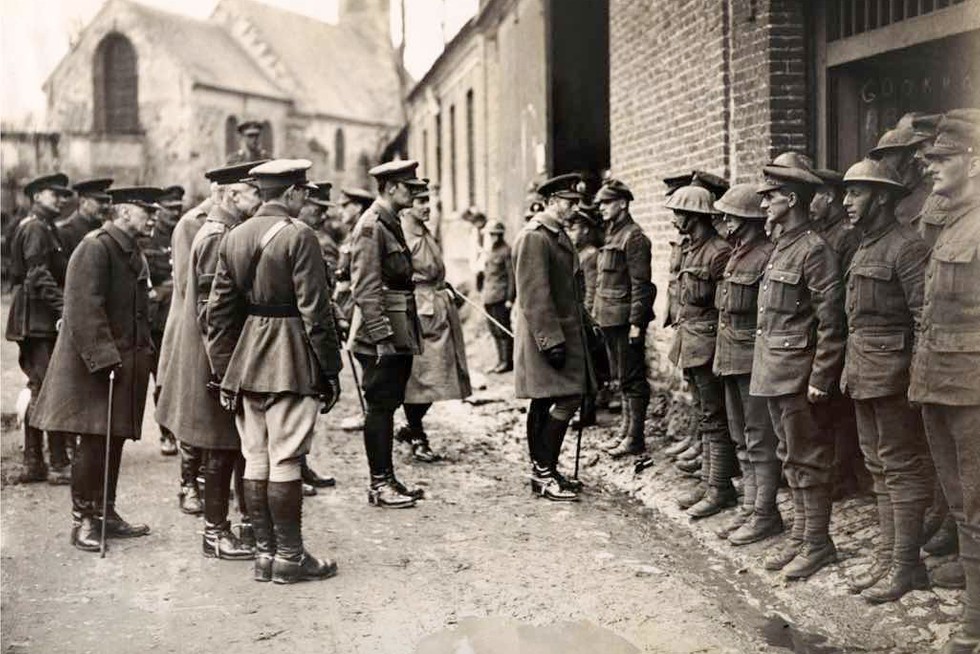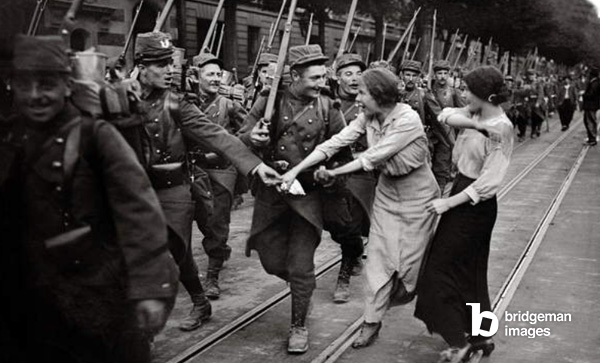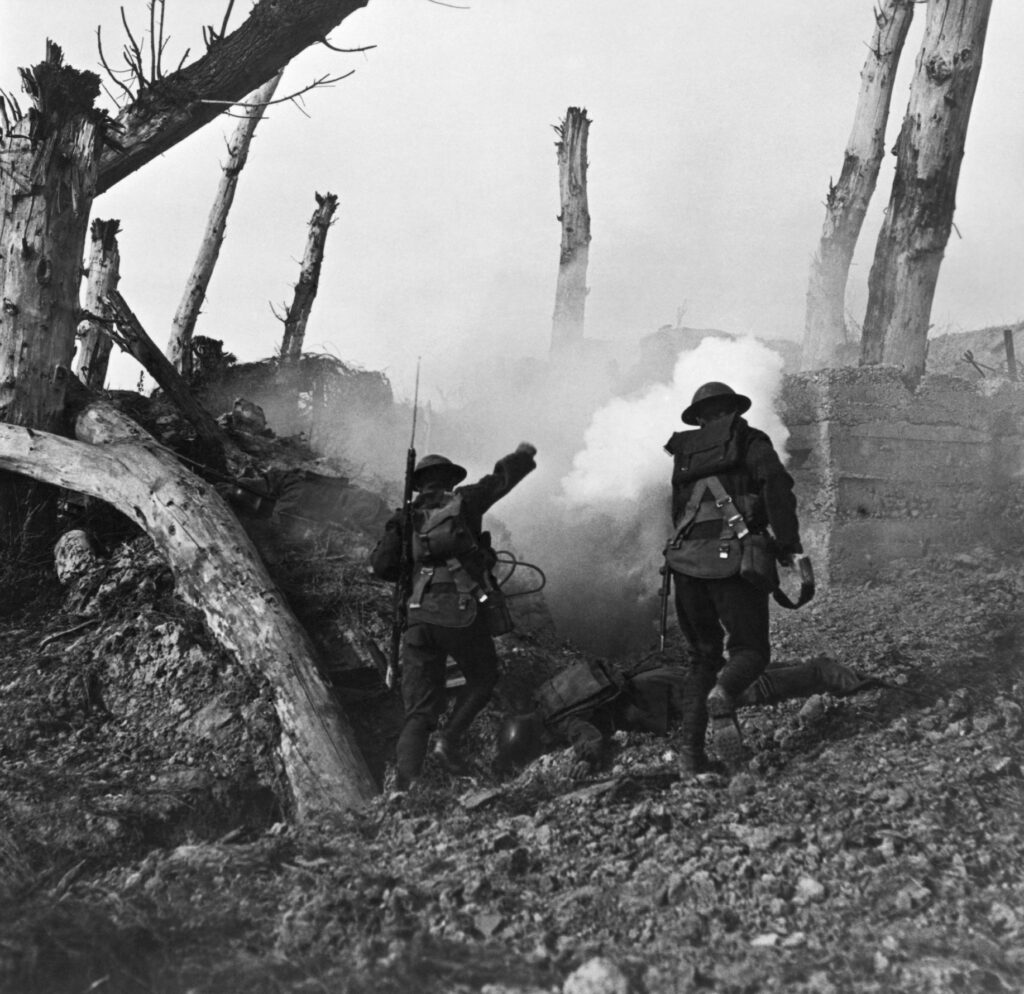World War I was a global conflict that lasted from 1914 to 1918. A conflict of such magnitudes, there were naturally some hidden costs of World War 1. It was primarily fought between the Allies, consisting of France, Russia, and the United Kingdom, and the Central Powers, consisting of Germany, Austria-Hungary, and the Ottoman Empire. The war was caused by a number of factors, including imperialism, nationalism, and alliances between countries.
On June 28, 1914, the assassination of Archduke Franz Ferdinand of Austria-Hungary by a member of a Serbian nationalist group was the spark that ignited the conflict. This event led to a series of events that quickly escalated into a full-blown war. The initial conflict was fought primarily in Europe, but eventually spread to other parts of the world, including Africa and the Middle East.
World War I was characterised by trench warfare, which was a form of fighting in which soldiers lived in trenches for extended periods of time. This type of warfare resulted in large numbers of casualties and a significant number of wounded soldiers. The war also saw the introduction of new and deadly technologies, such as tanks, poison gas, and submarines, which had a profound impact on the way wars were fought in the future. Despite the efforts of the Allies, the Central Powers emerged victorious in the war, leading to a number of political and economic changes in the world. Further, we’ll explore the hidden costs of World War 1.
World War 1
World War I was a global conflict that lasted from 1914 to 1918. It was one of the largest and deadliest wars in human history, with an estimated total of 16 million people killed, including soldiers and civilians. The war was fought between the Allies, consisting of France, Russia, and the United Kingdom, and the Central Powers, consisting of Germany, Austria-Hungary, and the Ottoman Empire. The conflict resulted in major political, economic, and social changes in the world and played a significant role in shaping the 20th century.
The causes of World War I were complex and include a combination of imperialism, nationalism, military buildup, and alliances between countries. One of the main causes was the growing tensions between the major European powers, which were competing for colonies and territory around the world. In addition, the complex network of alliances between countries, which promised military support in the event of an attack, contributed to the escalation of the conflict.
The spark that ignited the conflict was the assassination of Archduke Franz Ferdinand of Austria-Hungary on June 28, 1914, by a member of a Serbian nationalist group. This event led to a series of events that quickly escalated into a full-blown war. The initial conflict was fought primarily in Europe, but eventually spread to other parts of the world, including Africa and the Middle East.
World War I was characterized by trench warfare, which was a form of fighting in which soldiers lived in trenches for extended periods of time. This type of warfare resulted in large numbers of casualties and a significant number of wounded soldiers. The war also saw the introduction of new and deadly technologies, such as tanks, poison gas, and submarines, which had a profound impact on the way wars were fought in the future.

Despite the efforts of the Allies, the Central Powers emerged victorious in the war, leading to a number of political and economic changes in the world. The Treaty of Versailles, signed in 1919, officially ended the war and imposed heavy penalties on Germany, including war reparations and territorial losses. The treaty also established the League of Nations, an international organization designed to prevent future wars, but its inability to stop the rise of Nazi Germany and the start of World War II demonstrated its limitations.
Overall, World War I had a profound impact on the world and shaped the course of the 20th century. The loss of life and the economic and social consequences of the war led to a significant loss of confidence in government and traditional institutions and set the stage for a number of political and social movements in the decades that followed.
Financial Aspects
World War I had a significant impact on the global economy, both during the conflict and in the years that followed. The financial cost of the war was staggering, with the major powers spending billions of dollars on military hardware, supplies, and manpower. The war also had a significant impact on the economies of the participating countries, leading to inflation, increased taxation, and other economic challenges. So, what were the hidden costs of World War 1?
One of the major financial consequences of the war was the rapid inflation that took place in many countries, particularly in Germany and Austria-Hungary. This inflation was caused by the large amounts of money being printed to finance the war effort, which led to a rapid decline in the value of currency. In some cases, inflation was so severe that the cost of goods and services increased by several hundred percent.
The war also resulted in increased government debt in many countries. In order to finance the war effort, governments around the world had to borrow large amounts of money, which resulted in increased government debt. This debt would take many years to repay, putting a significant burden on future generations.
In addition to these financial challenges, the war also had a significant impact on international trade and commerce. The war resulted in the disruption of trade routes, the closure of markets, and the destruction of infrastructure, which had a significant impact on the global economy. Many countries also imposed trade restrictions and tariffs, which further limited the flow of goods and services around the world.

The end of the war brought about new economic challenges as well. The Treaty of Versailles imposed heavy penalties on Germany, including war reparations and territorial losses, which had a significant impact on the German economy. The treaty also led to the break-up of the Austro-Hungarian Empire and the Ottoman Empire, which had far-reaching economic consequences for the region.
In conclusion, World War I had a profound impact on the global economy. The financial cost of the war was staggering, and the war resulted in increased government debt, inflation, and other economic challenges. The end of the war brought about new economic challenges as well, including the heavy penalties imposed on Germany and the break-up of the Austro-Hungarian and Ottoman Empires. These economic consequences of the war had far-reaching effects on the global economy and would play a significant role in shaping the world in the years that followed.
Financial Figures and Statistics
Here are some financial figures and statistics related to World War I:
- Total cost of the war: The total cost of World War I is estimated to be between $296 billion and $1 trillion in today’s dollars, depending on the methods used to calculate the cost.
- War debt: The war resulted in a significant increase in government debt in many countries. For example, the United Kingdom’s national debt increased from £625 million in 1914 to £7,800 million in 1918.
- Inflation: The war resulted in rapid inflation in many countries, particularly in Germany and Austria-Hungary. For example, in Germany, the cost of goods and services increased by 463% between 1914 and 1923.
- Reduction in international trade: The war resulted in the disruption of trade routes and the closure of markets, leading to a significant reduction in international trade. For example, the volume of world trade declined by about 50% between 1914 and 1918.
- War reparations: Germany was required to pay large sums of money in war reparations as part of the Treaty of Versailles. The total amount of war reparations demanded from Germany was 132 billion marks, or approximately $33 billion in today’s dollars.
These financial figures and statistics demonstrate the staggering financial cost of World War I and its impact on the global economy. The war resulted in increased government debt, rapid inflation, and a reduction in international trade, which had far-reaching economic consequences for many countries.

Here are some financial figures and statistics related to World War I:
- Total cost of the war: The total cost of World War I is estimated to be between $296 billion and $1 trillion in today’s dollars, depending on the methods used to calculate the cost.
- War debt: The war resulted in a significant increase in government debt in many countries. For example, the United Kingdom’s national debt increased from £625 million in 1914 to £7,800 million in 1918.
- Inflation: The war resulted in rapid inflation in many countries, particularly in Germany and Austria-Hungary. For example, in Germany, the cost of goods and services increased by 463% between 1914 and 1923.
- Reduction in international trade: The war resulted in the disruption of trade routes and the closure of markets, leading to a significant reduction in international trade. For example, the volume of world trade declined by about 50% between 1914 and 1918.
- War reparations: Germany was required to pay large sums of money in war reparations as part of the Treaty of Versailles. The total amount of war reparations demanded from Germany was 132 billion marks, or approximately $33 billion in today’s dollars.
These financial figures and statistics demonstrate the staggering financial cost of World War I and its impact on the global economy. The war resulted in increased government debt, rapid inflation, and a reduction in international trade, which had far-reaching economic consequences for many countries.
Conclusion
In conclusion, World War I had a profound impact on the global economy. The financial cost of the war was staggering, with the major powers spending billions of dollars on military hardware, supplies, and manpower. The war also resulted in increased government debt, rapid inflation, and a reduction in international trade, which had far-reaching economic consequences for many countries.
The inflation that took place in many countries was caused by the large amounts of money being printed to finance the war effort, leading to a rapid decline in the value of currency. This inflation was particularly severe in Germany and Austria-Hungary, where the cost of goods and services increased by several hundred percent.
The increased government debt was a result of the need to finance the war effort, and this debt would take many years to repay, putting a significant burden on future generations. The war also resulted in the disruption of trade routes and the closure of markets, leading to a significant reduction in international trade.
The end of the war brought about new economic challenges as well, including the heavy penalties imposed on Germany through the Treaty of Versailles and the break-up of the Austro-Hungarian and Ottoman Empires. The Treaty of Versailles required Germany to pay large sums of money in war reparations, which had a significant impact on the German economy.
In conclusion, World War I had a profound impact on the global economy and the financial figures and statistics demonstrate the staggering cost of the conflict. The war resulted in increased government debt, rapid inflation, and a reduction in international trade, and these economic consequences would play a significant role in shaping the world in the years that followed.


